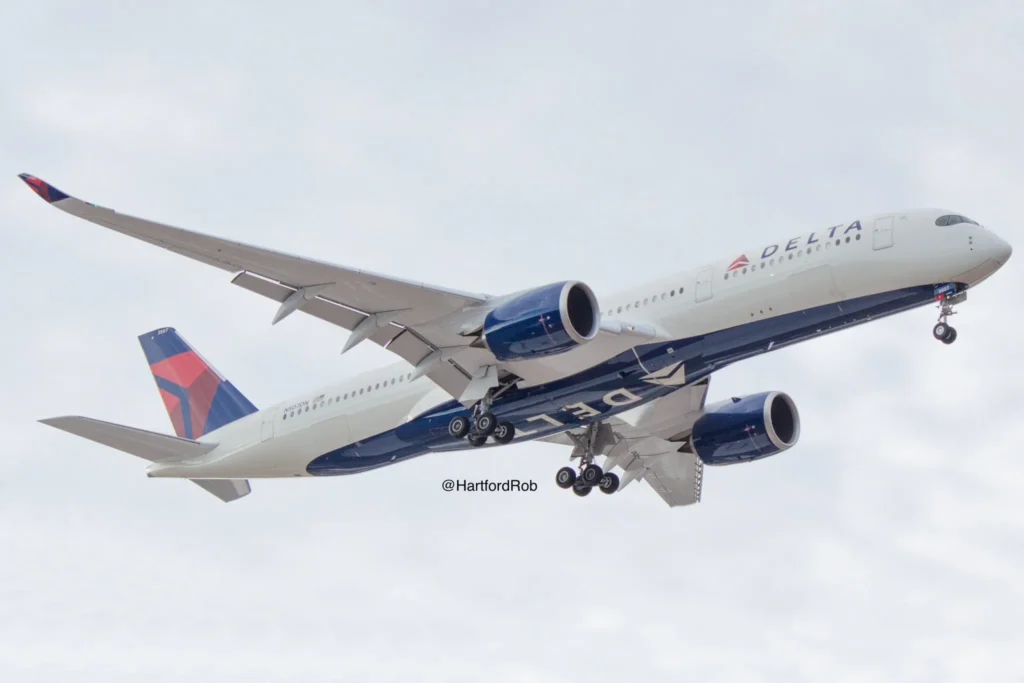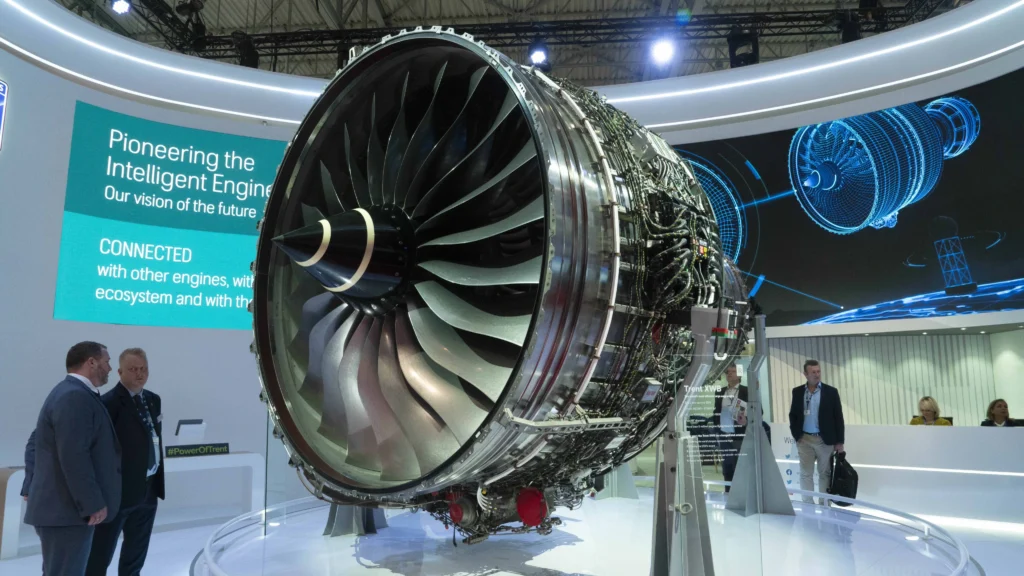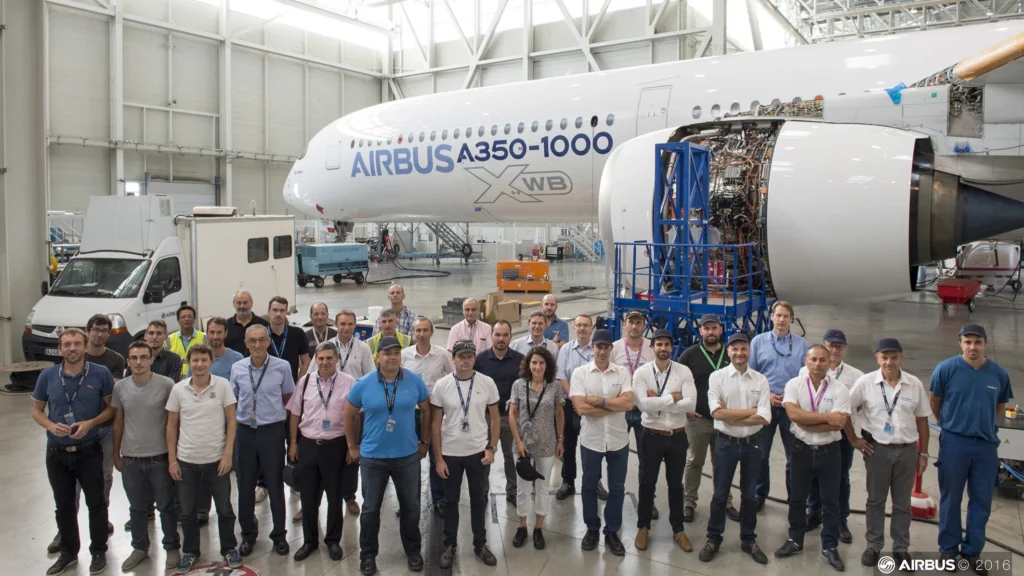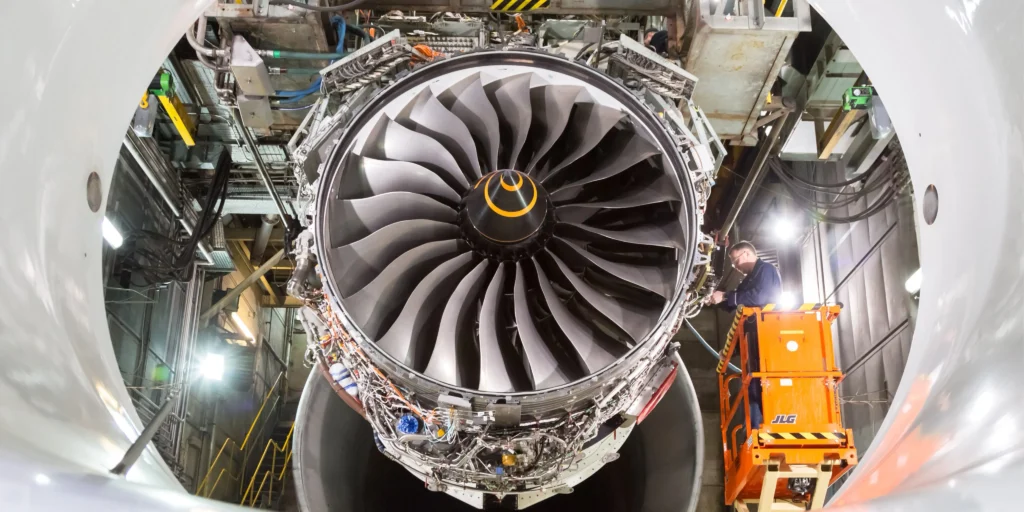ATLANTA- Delta Air Lines (DL) achieved the distinction of becoming the first carrier to receive an Airbus A350-900 powered by Rolls-Royce’s new “Enhanced Performance” variant of the Trent XWB-84 engine.
The powerplant received aircraft-level certification in April. Rolls-Royce claimed a 1% reduction in specific fuel burn compared to baseline models. Cirium fleet data indicates Delta (DL) received an A350 from Airbus on April 30, with another scheduled for delivery on June 15.

Delta A350 with RR Trent EP Engine
Rolls-Royce achieved the EP variant’s performance improvements through optimised systems engineering rather than incorporating novel technologies.
Andy Ward, vice-president of programmes at the UK engine maker, explained that the company leveraged its operational knowledge of how customers utilise the 84,000lb thrust-rated XWB-84 engine.
The EP variant serves as an optional upgrade to the baseline engine configuration, with Singapore Airlines (SQ) previously identified as the sole customer before Delta’s service entry.
The EP variant development forms part of Rolls-Royce’s £1 billion improvement package spanning its in-production Trent family. The manufacturer plans to introduce durability enhancements for the Trent 1000, which powers Boeing 787 aircraft, designed to double the engine’s time-on-wing performance.
These modifications target high-pressure turbine blade longevity, addressing durability challenges that have created availability issues for operators.

Regulatory Approval
Alan Newby, Rolls-Royce director for research and technology, indicated that aircraft-level certification from US regulators approaches completion for the Trent 1000 durability package.
The company will commence testing on additional upgrade packages for both Trent 1000 and Trent 7000 engines this year, focusing on HPT blade improvements ahead of the expected 2026 rollout.
Newby expressed confidence that these modifications will deliver an additional 30% time-on-wing gain for engines powering A330neo aircraft.

Advanced Component Testing
Ground testing of new components for the Trent XWB-97, which powers A350-1000 aircraft, progresses at full capacity with engines currently undergoing evaluation. The 97,000lb-thrust XWB-97 improvements represent the largest portion of the £1 billion investment. It incorporates redesigned HPT blades, nozzle guide vanes, ceramic matrix composite seal segments, and combustor optimisation.
Rolls-Royce targets 2028 for XWB-97 enhancement rollout, specifically addressing engine durability in hot and sandy operating environments.

ALECSys Combustor Technology
Rolls-Royce expects to complete flight testing of its ALECSys lean-burn combustor system by late June or early July.
The company conducted tests using a Trent 1000 donor engine installed on its 747-200 flying testbed throughout early 2024. This includes cold-weather campaigns in Fairbanks, Alaska.
Newby confirmed that testing focused on system maturity validation and model verification, representing the final evaluation phase.

Emission Reduction
ALECSys technology, originally flown in 2022, received subsequent modifications improving both fuel injector and control system performance. The system enhances fuel and air pre-mixing before ignition, achieving more complete combustion while reducing NOx and particulate emissions.
Testing conducted in Cologne and on specialised rigs demonstrated 40% NOx emission reductions. ALECSys serves as a fundamental component of Rolls-Royce’s UltraFan engine, scheduled for service entry next decade.
Stay tuned with us. Further, follow us on social media for the latest updates.
Join us on Telegram Group for the Latest Aviation Updates. Subsequently, follow us on Google News

